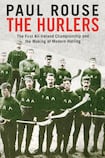
The final paragraph of Paul Rouse’s all-encompassing account of the years leading up to the first All Ireland hurling final reads, “In 1882, when he embarked upon the revival of hurling, Michael Cusack wrote that if his mission proved to be successful, he had no doubt that the coming generations will ‘bless us for the service we have rendered them’. That service – the remaking of hurling, the founding of an association to foster the game and the organisation of a national championship – was undertaken by pioneers whose legacy is the generations of hurlers who have followed in their wake. They set off something that has yet to end.”
That last sentence certainly resonates in this year of 2018 such has been the quality of the hurling witnessed.
Yes indeed, hurling is very much in vogue in 21st century Ireland and indeed further afield. Hurling is now played in small pockets all over the world. The July issue of Vogue Paris carried a heading on one of its pieces "Escape to the sumptuous surroundings of the Irish countryside, for a 90s-tinged tale of romance." Offaly hurler Oisín Murphy features in the accompanying picture togged out in an O'Neill's kit, hurley and helmet with supermodel Adwoa Aboah on his arm.
Greatest 24 hours
Recently, both All Ireland semi finals were epics in every sense and both went to extra time. There were 130 scores recorded over the 190 minutes. It was possibly the greatest 24 hours in the history of the hurling.
This is a far cry from the late 1870s when organised hurling didn't exist. There weren't any hurling clubs in the country. A letter to The Irish Times proved to be the catalyst that got the ball rolling so to speak. Written by a Dub who signed himself "Omega", he sought support to revive the "manly, generous and exhilarating game". Michael Cusack the next day also wrote to The Irish Times expressing a similar sentiment.
And so a journey began, plagued with difficulty in an era in which sports enthusiasts, agitators and clergy played significant roles in the development of the association now known as the GAA.
Rouse’s book paints a picture of the 1880s in which poverty, landlords, eviction and patriotism were everywhere. It’s a narrative driven by many, many characters. Clare native Michael Cusack being the main player with Tipperary man Maurice Davin being an ever-present voice of reason in this very charged time. Archbishop Croke of Cashel also played no small role.
Cusack was a Dublin-based teacher and journalist. He was obsessed with hurling but was also the founder of a rugby club and a keen cricket player. But he and many others were driven by the politics in the country in the 1880s, particularly the Land War fallout, the rise of the IRB and the undercurrent of revolution.
Davin, of farming stock, whose family were involved in the river haulage business, was a keen rower, cricket player, athlete and fitness fanatic.
Rouse writes “in terms of temperament and upbringing, Davin and Cusack had little in common. Where Cusack was volatile and restless, Davin was genial and methodical, and together they were about to turn the Irish sporting world on its head”.
Painstaking research
And so the journey began. Rouse, with what must have been painstaking research, charts the slow obstacle-filled route of the revival of hurling in some counties, culminating in the final of 1887 between Thurles and Meelick which actually took place on Easter Sunday 1888 in Birr. Thurles were eventually crowned winners in an eventful game but then all games of the era were eventful .
The book is a story of pioneerism, passion, intrigue, skulduggery and commitment acted out by a cast of characters from a range of backgrounds. Hurlers, farmers, the clergy, the IRB, Fenians and Land League agitators all played significant parts in the slow progression of the GAA.
This is a history and sports book. It’s a must read for the many sports, and particularly hurling, supporters and admirers in today’s version of Ireland.
It’s evident after reading this excellent historical account that hurling is uniquely bound up with Irish identity, in all its complexity and sublety.
From sweepers, to Lowry Meagher, donkey and jennet races, faction fights, superstar Tom O’Grady of Thurles, on-field violence, stone throwing, fracas, brawls, alcohol, gambling, gaming tables, con artists, hucksters, Melbourne, Boston, All star tour to the US, hickory hurleys, Parnell, Davitt, Hayes’ Hotel, Dr Hugh Auchinleck, oh and sliotars, hurleys and much much more, it’s all there – a treasure trove of Irish historical and sporting history.
The obsessive drive of the men of great courage of the 1880s began organising a hibernating sport which has blossomed into a jewel in the Irish sporting world, and Paul Rouse describes the journey excellently, ensuring that the accounts of the pioneerism and heroics of the time will survive intact.










